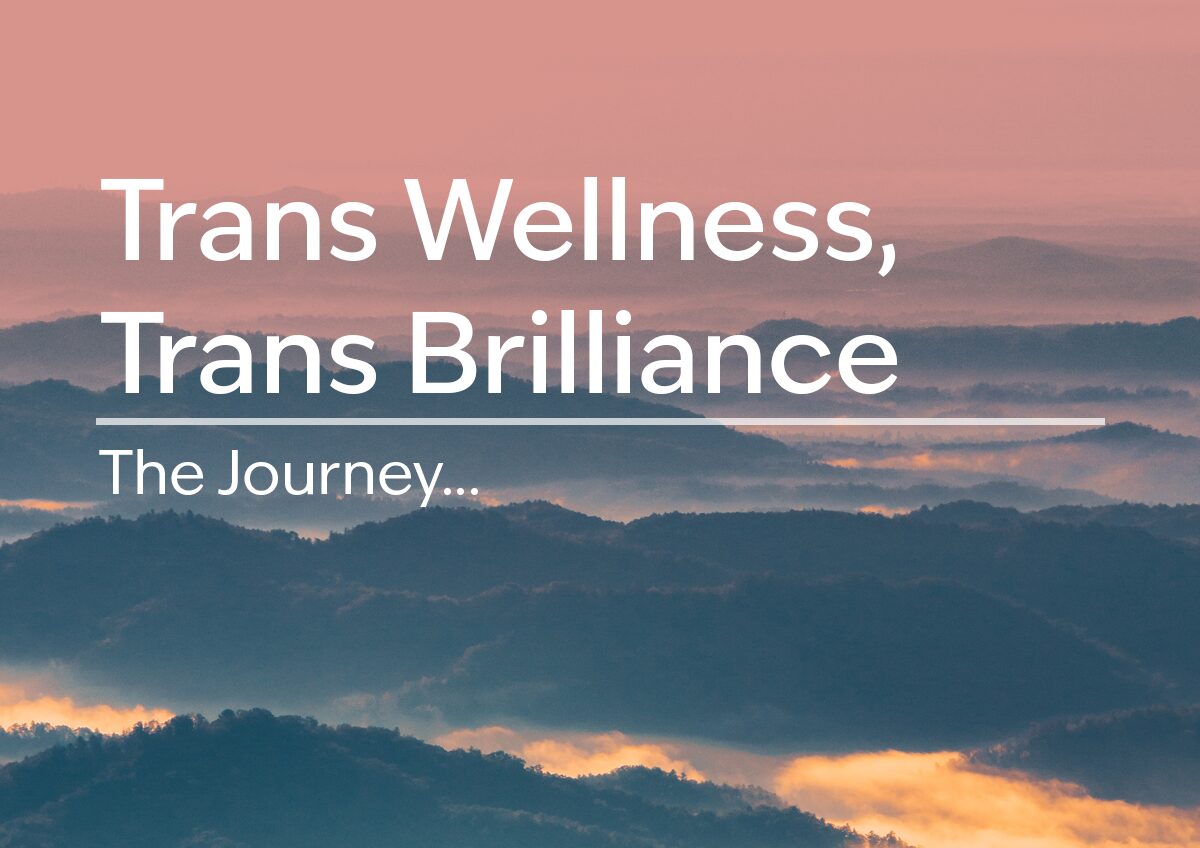
The Journey Behind “Trans Wellness, Trans Brilliance”
Transgender and gender-diverse (TGD) individuals face significant mental health challenges and barriers to accessing affirming care. But what if a community-centered, virtual intervention could foster resilience, self-compassion, and meaningful connections among TGD people? That’s the vision behind Trans Wellness, Trans Brilliance (TWTB), a groundbreaking initiative created by and for the TGD community in Michigan.
Why TWTB?
The trans/gender diverse community has long faced systemic discrimination and minority stress, leading to elevated rates of depression, anxiety, and suicidality. In the first-ever statewide survey exploring trans health in Michigan, TGD Michiganders reported significant challenges in accessing care, especially in rural areas. Nearly three-quarters of respondents revealed lifetime mental health diagnoses. The Finding Our Strength Survey highlighted that TGD participants who relied on passive coping strategies were more likely to experience severe anxiety, loneliness, and depression.
Transcend the Binary sought to advance well-being despite these daunting realities. TWTB was devised to promote emotional wellness through peer connection and co-learning. Designed by and for the TGD community, TWTB outlines an eight-week program to teach coping skills and build resilience and community connections. What makes it unique? It’s led by peers, accessible online, and built on the lived expertise of TGD individuals.
The Building Blocks: Community Insights and Research
To create TWTB, Brayden A. Misiolek (they/he; Transcend the Binary), Cecil McGhee (they/he; University of Michigan) and Shanna Kattari (they/them; University of Michigan) conducted interviews with TGD community stakeholders across Michigan. These conversations revealed critical gaps in mental health care and provided a wealth of ideas for structuring the program. Participants emphasized:
-
-
- The importance of trauma-informed care.
- Practical, experiential learning over lecture-style teaching.
- Centering joy and personal reflection alongside skill-building.
-
A focus group later refined these ideas, leading to an intervention rooted in the community’s needs and desires.
How Does TWTB Work?
Over eight weeks, participants engage in structured, 90-minute virtual sessions led by trained facilitators. Each week focuses on a specific topic, such as mindfulness, stress management, or navigating interpersonal relationships. Sessions include affirmations, grounding exercises, skill-building activities, and open discussions. For example:
Week 1: Define personal values and introduce self-compassion.
Week 4: Explore emotional awareness and strategies for regulating intense feelings.
Week 8: Reflect on lessons learned and plan for continued growth.
This format ensures a balance of learning, practice, and community connection, fostering a safe and supportive environment.
Why Peer Support Matters
Research shows that peer support is transformative for TGD individuals. It reduces loneliness, fosters resilience, and provides a space to share experiences free from judgment. For many participants, TWTB may be a rare chance to connect with others who share their lived realities.
Facilitators, chosen for their lived experience and emotional literacy rather than formal credentials, play a vital role in creating a welcoming and inclusive space.
Challenges and Innovations
Developing TWTB wasn’t without hurdles. Issues like participant attrition, Zoom fatigue, and the diverse needs of a varied community required creative solutions. For instance, facilitators incorporated flexible activities and allowed participants to choose modifications that suited their comfort levels. This trauma-informed, participant-centered approach ensures the program remains accessible and effective.
What’s Next for TWTB?
The next step is implementation. Our team aims to evaluate TWTB’s effectiveness in improving mental health outcomes and fostering community resilience. By disseminating the program through trans-led organizations, the team hopes to empower TGD individuals to take wellness into their own hands.
Why This Matters
TWTB exemplifies the power of community-led initiatives. It moves beyond simply identifying disparities to creating tangible, scalable solutions. As one focus group participant shared, “Being able to connect with others gives self-worth and a feeling of being involved with a broader community.”
By addressing the unique needs of TGD Michiganders, TWTB is more than an intervention—it’s empowering community ingenuity. And its success could inspire similar programs nationwide, advancing equity and well-being for TGD communities.
Access the Full Article
To explore the development of Trans Wellness, Trans Brilliance in greater detail, read the full publication: Developing Trans Wellness, Trans Brilliance: A Virtual Peer-Support Wellness Intervention by and for Trans/Gender Diverse Michiganders.
Call to Action:
Sign up to get involved!
Check out Our Impact
